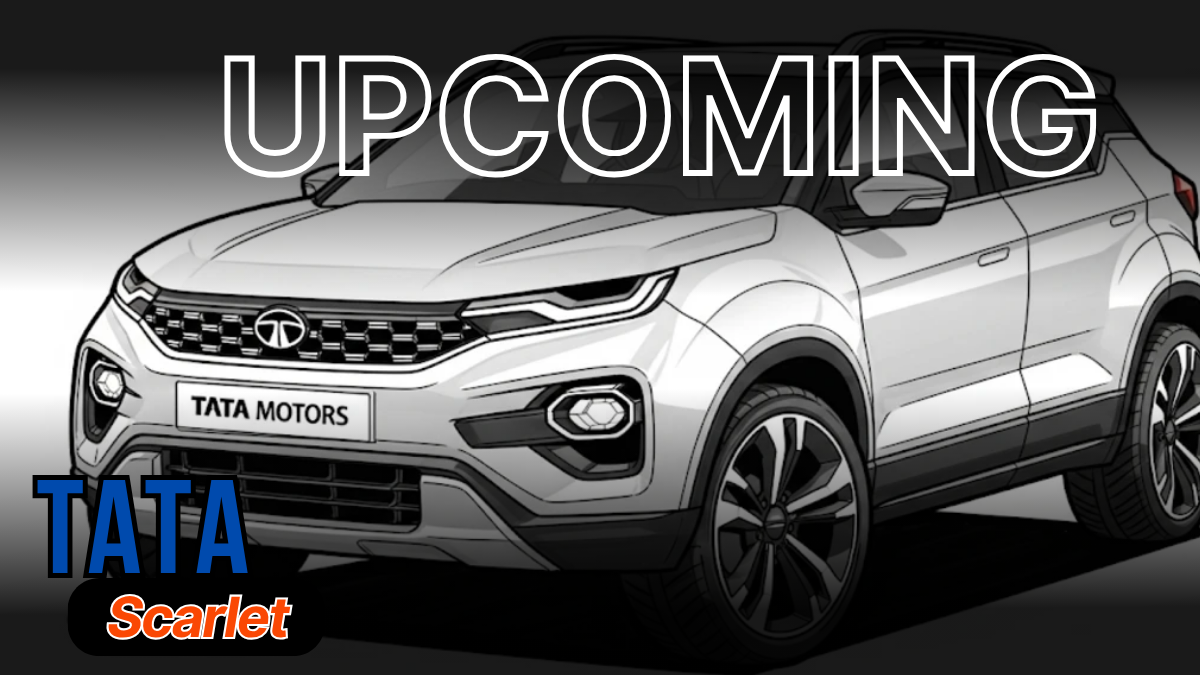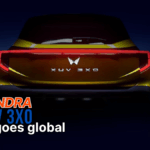Tata Motors is preparing to shock the compact SUV market with its upcoming Scarlet, a rugged, lifestyle-focused lorry that assures to bring something completely various to the sub-4-meter sector. While most automakers chase after sleek, crossover-inspired styles, Tata is betting on strong, blocky aesthetic appeals that might attract adventure-seekers and urban explorers alike.

The Scarlet represents more than simply another SUV launch. It’s part of Tata’s enthusiastic strategy to introduce 7 new nameplates by 2030, signaling the business’s intent to record diverse consumer sections beyond its present offerings. What makes this specific automobile so interesting is its possible to restore the rugged SUV visual in a market dominated by curved, car-like styles.
A Bold Design Philosophy Inspired by Heritage
The Scarlet draws motivation from Tata’s upcoming Sierra revival, embracing what industry experts refer to as a “slab-sided” design approach. This means purchasers can expect clean, geometric lines and an upright position that focuses on functionality over aerodynamic performance.
This design viewpoint stands in plain contrast to popular designs like the Hyundai Creta or Kia Seltos, which stress flowing curves and sporty silhouettes. Rather, the Scarlet appears placed to compete with cars like the Mahindra Bolero, which has actually preserved its boxy, practical appeal for decades.
Recent spy shots suggest this new Bolero will target purchasers looking for hard, adventure-ready aesthetics. The Scarlet’s comparable style direction suggests Tata acknowledges this untapped market sector.
Engineering Versatility for Multiple Powertrains
Among the Scarlet’s most engaging features lies below its bold exterior: a versatile monocoque platform designed to accommodate both internal combustion engines and electrical powertrains. This engineering approach reflects Tata’s dedication to offering consumers option while future-proofing their financial investment.
The internal combustion options are particularly varied. The Scarlet could feature the Nexon’s tested 1.2-liter turbo-petrol engine producing 120 horse power, or the advanced 1.2-liter direct-injection turbo-petrol from the Curvv, which produces 125 horsepower. There’s also speculation about a new 1.5-liter naturally aspirated fuel engine, which would provide a various character altogether.
Diesel enthusiasts haven’t been forgotten either. While many producers desert diesel alternatives in the compact section, Tata appears dedicated to providing this fuel option, recognizing that certain client sectors still prioritize diesel’s torque characteristics and fuel economy.
Electric Ambitions with AWD Potential
The electric variation of the Scarlet presents even more intriguing possibilities. Tata is reportedly thinking about a dual-motor setup that would put electrical motors on both axles, creating an all-wheel-drive system. This configuration would be especially attracting adventure-oriented purchasers who want electrical effectiveness without sacrificing capability.
Expense considerations might limit AWD schedule to the electrical variant. Internal combustion variations are unlikely to use all-wheel drive due to packaging constraints and the requirement to maintain competitive rates in the price-sensitive Indian market.
Strategic Positioning in a Crowded Market
Tata deals with the delicate challenge of positioning the Scarlet together with its existing Nexon without creating internal competitors. The solution appears to lie in targeting different buyer personas. While the Nexon appeals to city commuters seeking improved, efficient transportation, the Scarlet targets lifestyle-conscious purchasers who focus on experience ability and distinctive styling.
Expected pricing positions the Scarlet in direct competition with the Nexon range, which presently covers from Rs 8 lakh to Rs 15.6 lakh for internal combustion variants, and Rs 12.49 lakh to Rs 17.19 lakh for electric variations. This overlap recommends Tata is positive the lorries will interest sufficiently various audiences.
The Broader Market Context
The Scarlet’s development happens versus the background of India’s progressing vehicle preferences. While SUVs continue getting market share, a lot of offerings focus on city usability over rugged ability. The Scarlet’s blocky style and way of life positioning could catch buyers who feel underserved by existing crossover-oriented options.
This method also aligns with international trends. Markets around the world are seeing renewed interest in practical, adventure-ready vehicles. From the Ford Bronco’s revival in America to the success of the Suzuki Jimny worldwide, customers are progressively drawn to lorries that assure escapism and ability.
Obstacles and Opportunities Ahead
The Scarlet’s success will depend on a number of factors. First, Tata needs to perform the style vision successfully, producing a lorry that looks genuinely rugged without appearing outdated. The balance in between performance and modern sophistication will be essential.
Second, the business needs to guarantee the Scarlet offers authentic ability to match its adventurous appearance. Purchasers drawn to rugged styling often require corresponding efficiency, whether through increased ground clearance, robust underbody defense, or improved traction systems.
Third, Tata needs to differentiate the Scarlet clearly from both the Nexon and upcoming competitors like the new Bolero. This distinction must extend beyond styling to include functions, abilities, and brand positioning.
The Electric Evolution
The Scarlet’s electrical variation represents an especially fascinating chance. While the majority of electrical SUVs in India focus on effectiveness and urban use, an adventure-focused electrical SUV could open new market sections. The prospective dual-motor AWD system would be special in the compact electrical SUV area, potentially attracting purchasers who desire electric effectiveness without compromising ability.
Nevertheless, this approach likewise provides obstacles. Electric automobiles with double motors and AWD systems normally command exceptional rates, which could limit market appeal. Tata must balance ability with affordability to make sure the electrical Scarlet remains available to traditional buyers.
Looking Beyond the Scarlet
The Scarlet is simply one component of Tata’s broader product method. The business is simultaneously establishing two extra sub-4-meter electrical SUVs codenamed Terra and Kuno, showing its commitment to offering several options throughout different price points and customer sections.
This multi-pronged method shows Tata’s understanding that the electric car market is rapidly fragmenting into unique specific niches. By offering cars customized to specific usage cases and preferences, the company hopes to keep its EV leadership while broadening its total addressable market.
A New Chapter for Tata Motors
The Scarlet represents more than simply another product launch for Tata Motors. It indicates the business’s willingness to try out various design languages and market positions, moving beyond its traditional concentrate on value-oriented transportation toward lifestyle-focused offerings.
This advancement is especially considerable given Tata’s recent market obstacles. The business has actually seen its market share fluctuate as rivals introduce engaging alternatives. The Scarlet’s special positioning might help Tata capture purchasers who might otherwise think about automobiles from Mahindra, Maruti Suzuki, or Hyundai.
The Road Ahead
While official launch timelines stay unconfirmed, the Scarlet’s development as part of Tata’s 2030 product roadmap suggests a launch within the next couple of years. The company’s track record with recent launches like the Punch and Curvv shows its ability to execute distinctive item principles successfully.
The Scarlet’s supreme success will depend on Tata’s ability to equate its strong style vision into an engaging, capable automobile that provides on its adventure-ready promise. The Scarlet might develop a brand-new specific niche in the Indian SUV market while reinforcing Tata’s track record for development and customer-focused design if executed efficiently.
For purchasers seeking options to the present crop of car-like SUVs, the Scarlet represents an intriguing possibility. Whether it can successfully challenge recognized players like the Bolero while avoiding cannibalization of Tata’s own items remains to be seen. What’s certain is that the Scarlet’s arrival will add another dimension to India’s increasingly diverse and competitive SUV landscape.
Frequently asked questions
Q1: What is the expected launch date of the Tata Scarlet SUV?
Ans. The precise launch date of the Tata Scarlet SUV has actually not been officially revealed yet, however it is anticipated to arrive in the Indian market soon.
Q2: What type of drivetrain does the Tata Scarlet deal?
Ans. The Tata Scarlet functions an electrical all-wheel-drive (AWD) capability, designed to handle different surfaces and supply a robust adventure-ready experience.
Q3: What sets the Tata Scarlet apart from competitors like the Mahindra Bolero?
Ans. The Scarlet stick out due to its vibrant boxy styling, advanced electrical drivetrain, and concentrate on adventure-centric functions, providing a modern take on rugged off-road abilities.
Q4: Will the Tata Scarlet be offered in petrol or diesel variants?
Ans. Currently, the Tata Scarlet is expected to focus primarily on electric powertrains as part of Tata’s commitment to sustainable movement services.
Q5: What type of functions can we expect in the Tata Scarlet?
Ans. The Scarlet is expected to come geared up with advanced innovation, safety features, and a design customized for adventurous activities, in addition to Tata’s hallmark reliability and construct quality.
Q6: Who is the Tata Scarlet designed for?
Ans. The Tata Scarlet is designed for clients looking for an SUV that blends durability and modernity, suitable for urban lifestyles as well as off-road experiences.
The Scarlet’s comparable style instructions suggests Tata recognizes this untapped market segment.
Tata deals with the delicate challenge of positioning the Scarlet together with its existing Nexon without creating internal competition. The Scarlet’s electrical variant represents a particularly interesting chance. Tata must stabilize capability with affordability to guarantee the electrical Scarlet remains available to mainstream buyers.
The Scarlet’s unique positioning might help Tata capture buyers who may otherwise think about lorries from Mahindra, Maruti Suzuki, or Hyundai.
Click HERE For More


